The Black Hole Information Paradox, Stephen Hawking’s Greatest Puzzle, Is Still Unsolved

The paradox is one that Hawking himself claimed to have a solution to many times, but none of the proposals have held up to scrutiny. The paradox is still unresolved.
With the passing of Stephen Hawking, science has lost not only its most recognizable public figure, but also a remarkable researcher into the nature of black holes. While his final paper may have focused more on some of the existential challenges facing cosmology today, his greatest scientific contributions were in uncovering some incredible quantum truths about the Universe by examining its most extreme objects. Black holes, once thought to be static, unchanging, and defined only by their mass, charge, and spin, were transformed through his work into ever-evolving engines that had a temperature, emitted radiation, and eventually evaporated over time. Yet this now-accepted scientific conclusion — inferring the presence and properties of Hawking radiation — had a tremendous implication: that black holes provided a way to destroy information about the Universe. Despite 40+ years of work on the problem by the world’s brightest minds, the black hole information paradox still remains unresolved.

The second law of thermodynamics is one of the most inviolable rules of the Universe: take any system you like, don’t allow anything to enter or leave it, and its entropy will never spontaneously decrease. Eggs don’t spontaneously unscramble themselves, warm water never separates into hot and cold sections, and ashes don’t reassemble into the shape of the object they were before they were burned. All of these would be an example of decreasing entropy, and this doesn’t happen, in nature, on its own. Entropy can remain the same; under most circumstance it increases; but it can never return to a lower-entropy state. In fact, the only way to artificially decrease entropy is to pump energy into a system, “cheating” the second law by increasing the entropy external to the system by a larger amount than it decreases within your system. (Cleaning your house is one such example.) Put simply, entropy can never be destroyed.
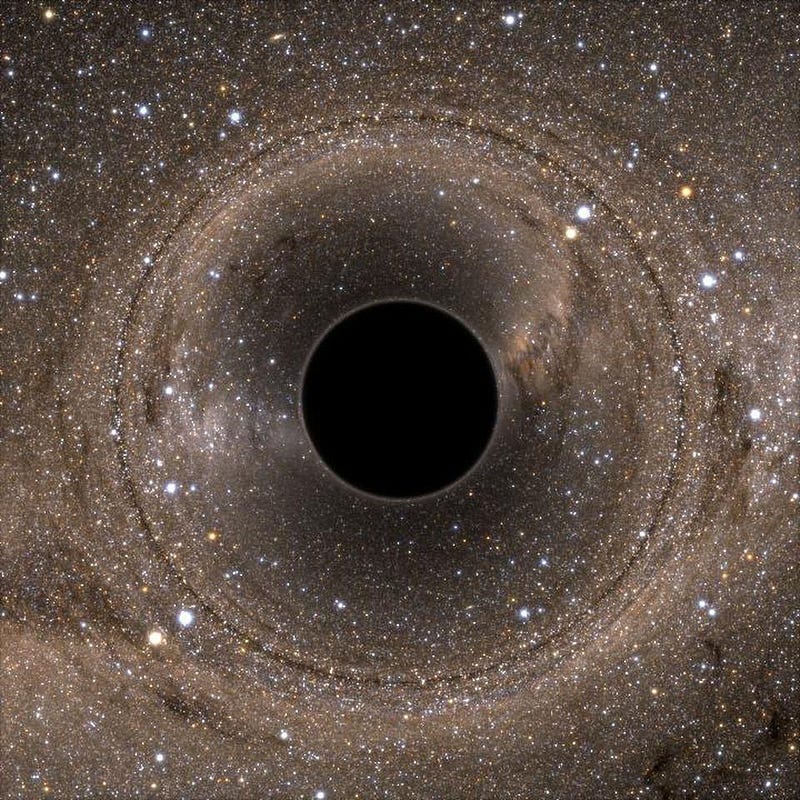
For black holes, the thought — for a long time — was that they had zero entropy, but that couldn’t be right. If the matter that you made black holes out of had a non-zero entropy, then by throwing that material into a black hole, entropy would have to go up or stay the same; it could never go down. The idea for a black hole’s entropy traces back to John Wheeler, who was thinking about what happens to an object as it fall into a black hole from the point of view of an observer well outside the event horizon. From far away, someone falling in would appear to asymptotically approach the event horizon, turning redder and redder due to gravitational redshift, and taking an infinitely long time to reach the horizon, as relativistic time dilation took effect. The information, therefore, from whatever fell in would appear to be encoded on the surface area of the black hole itself.
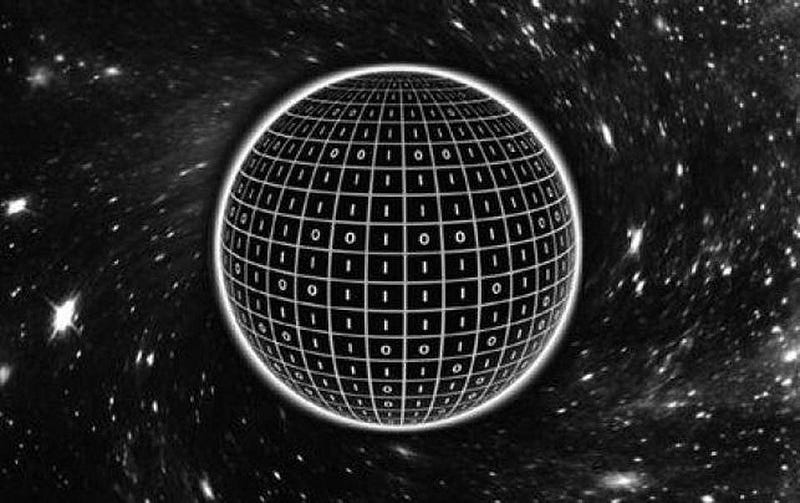
Since a black hole’s mass determines the size of its event horizon, this gave a natural place for the entropy of a black hole to exist: on the surface area of the event horizon. All of a sudden, black holes had an enormous entropy, based on the number of quantum bits that could be encoded on an event horizon of a particular size. But anything that has an entropy also has a temperature, which means it radiates. As Hawking famously demonstrated, black holes emit radiation of a particular (blackbody) spectrum and temperature, defined by the mass of the black hole that it’s coming from. Over time, that emission of energy means that the black hole is losing mass, owing to Einstein’s famous E = mc2; if energy is being released, it has to come from somewhere, and that “somewhere” must be the black hole itself. Over time, the black hole will lose mass faster and faster, until in a brilliant flash of light far in the future, it evaporates entirely.

This is a great story, but it has a problem. The radiation it emits is purely blackbody, meaning it has the same properties as if we took a completely black object and heated it up to a particular temperature. The radiation, therefore, is exactly the same for all black holes of a particular mass — and this is the kicker — regardless of what information is or isn’t imprinted on the event horizon.
According to the laws of thermodynamics, however, this can’t be! That’s the equivalent of destroying information, and is specifically the one things that’s disallowed.

If you burn two identically-sized books with very different content, you might be practically unable to reconstruct the text of either book, but the patterns of ink on the paper, the variations in molecular structures, and other minute differences all contain information, and that information remains encoded in the smoke, ash, the surrounding air, and all the other particles in play. If you could monitor the environment around and including the books to arbitrary accuracy, you would be able to reconstruct all the information you wanted; it’s scrambled, but not lost.
The black hole information paradox, however, is that all the information that was imprinted on the event horizon of the black hole, once it evaporates, has left no trace in our observable Universe.
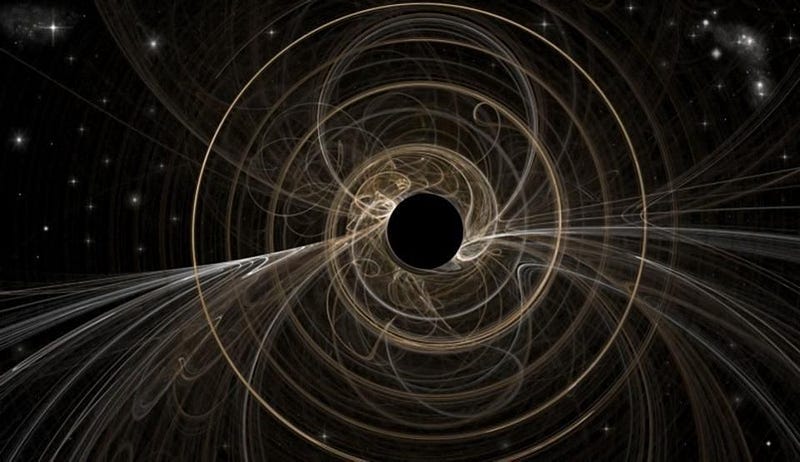
This loss of information should be forbidden by the rules of quantum mechanics. Any system can be described by a quantum wavefunction, and every wavefunction is unique. If you evolve your quantum system forwards in time, there’s no way that two different systems should arrive at the same final state, but that’s exactly what the information paradox implies. As far as we understand it, one of two things must be happening:
- Either information is truly destroyed somehow when a black hole evaporates, teaching us that there are new rules and laws in place for black hole evaporation,
- Or the radiation that’s emitted somehow contains this information, meaning that there’s more to Hawking radiation than the calculations we’ve done so far imply.
This paradox, more than forty years after it was first noticed, has still never been resolved.
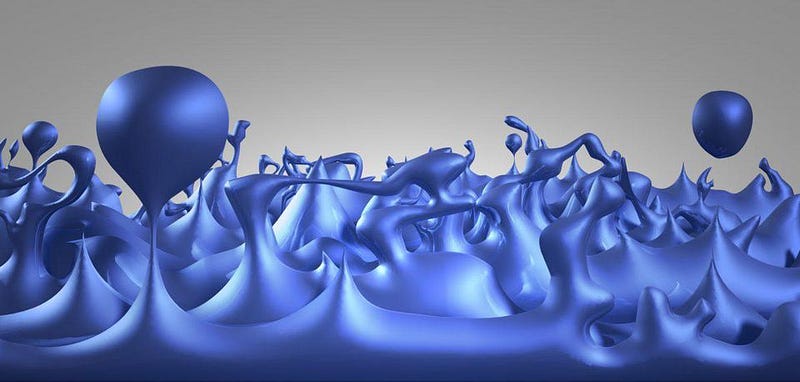
While Hawking’s original calculations demonstrate that evaporation via Hawking radiation destroys whatever information was imprinted on the black hole’s event horizon, modern thought is that something must happen to encode that information in the outgoing radiation. Many physicists appeal to the holographic principle, noting that the information encoded on the black hole’s surface applies quantum corrections to the purely thermal Hawking radiation state, imprinting itself on the radiation as the black hole evaporates away and the event horizon shrinks. Despite the fact that Hawking, John Preskill, Kip Thorne, Gerard ‘t Hooft, and Leonard Susskind made bets and declared victory and defeat with respect to this problem, the paradox remains very much alive and unresolved, with many hypothesized solutions other than the one presented here.
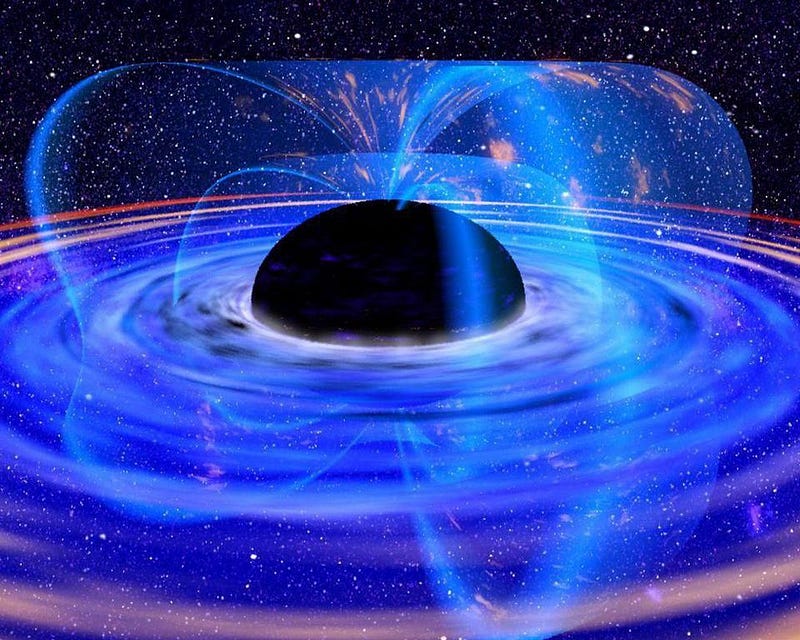
Despite our best efforts, we still don’t understand whether information leaks out of a black hole when it radiates energy (and mass) away. If it does leak information away, it’s unclear how that information is leaked out, and when or where Hawking’s original calculations break down. Hawking himself, despite conceding the argument more than a decade ago, continued to actively publish on the topic, often declaring that he had finally solved the paradox. But the paradox remains unresolved, without a clear solution. Perhaps that’s the greatest legacy one can hope to achieve in science: to uncover a new problem so complex that it will take multiple generations to arrive at the solution. In this particular case, most everyone agrees on what the solution ought to look like, but nobody knows how to get there. Until we do, it will remain just another part of Hawking’s incomparable, enigmatic gifts that he shared with the world.
Ethan Siegel is the author of Beyond the Galaxy and Treknology. You can pre-order his third book, currently in development: the Encyclopaedia Cosmologica.





